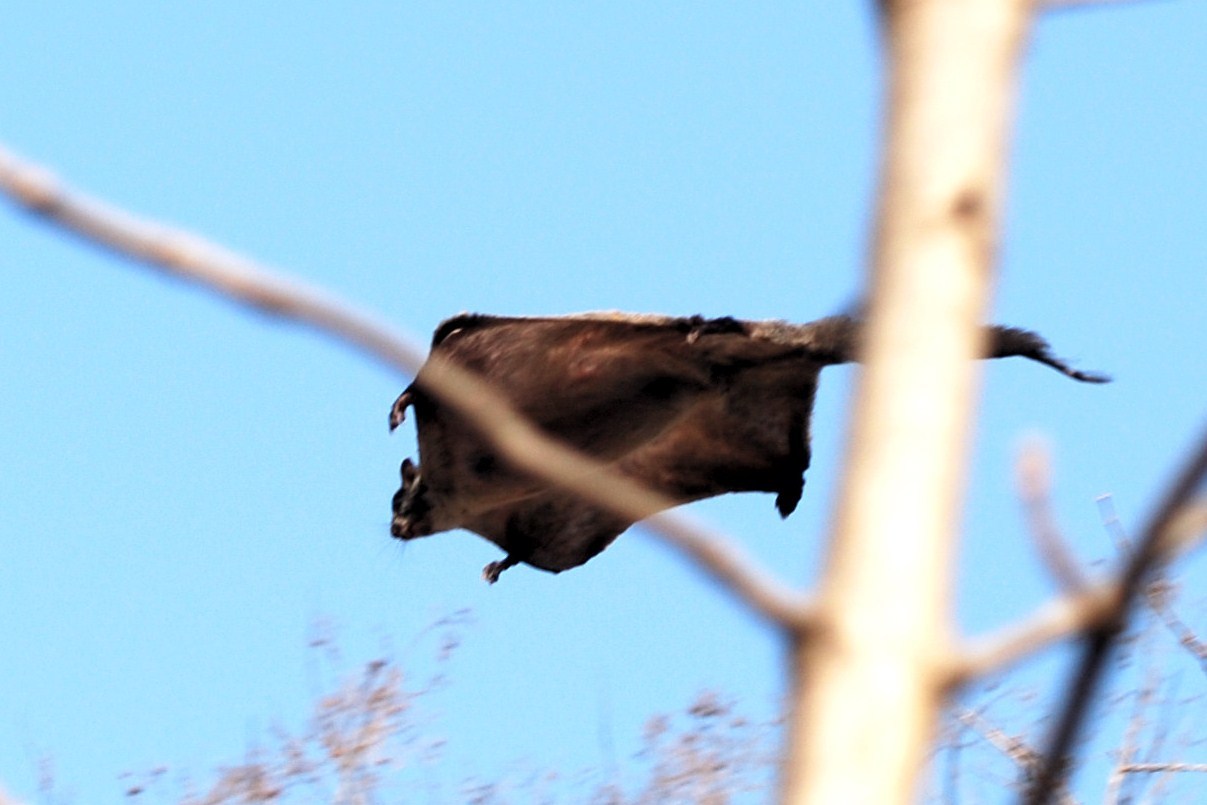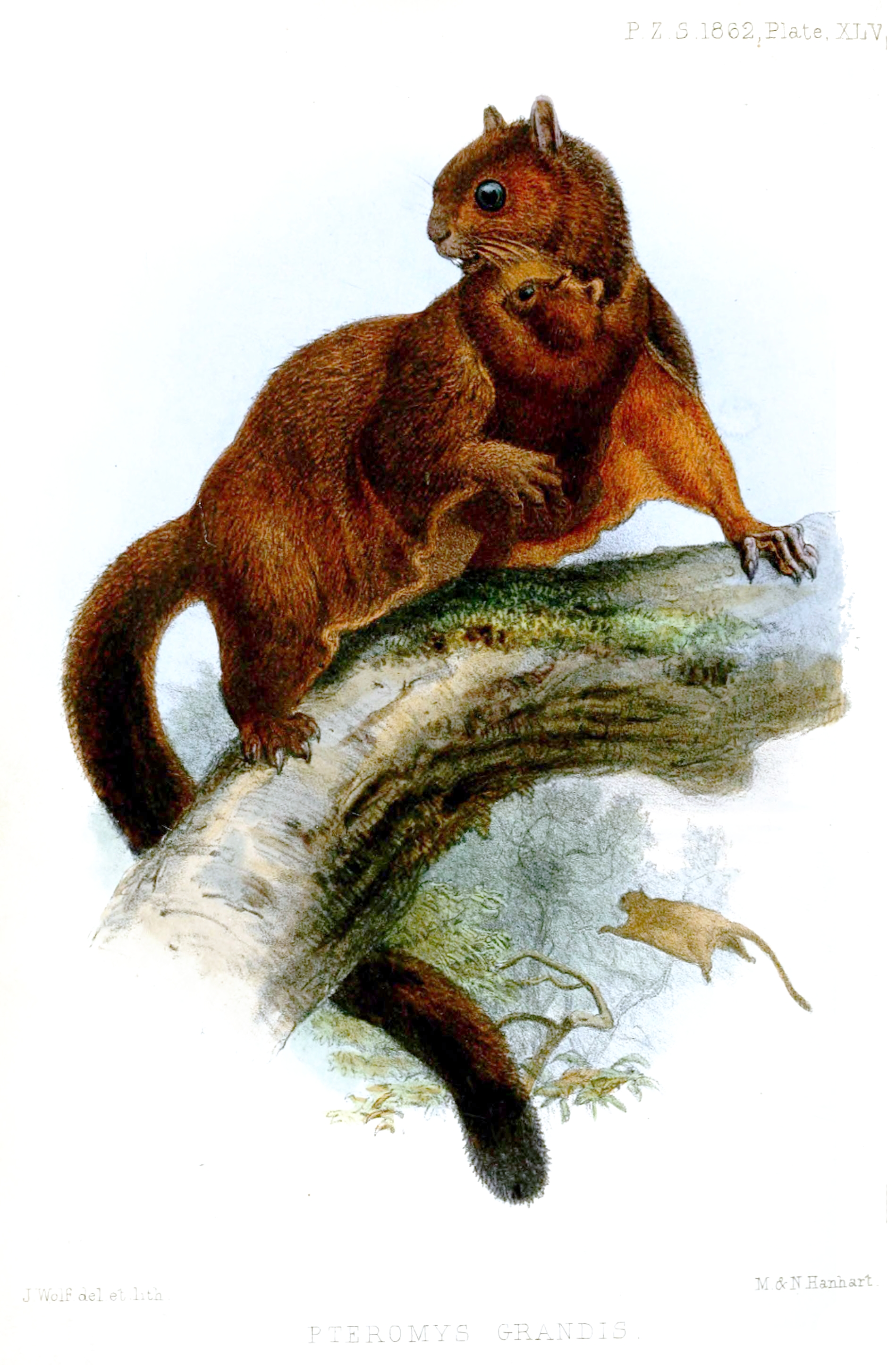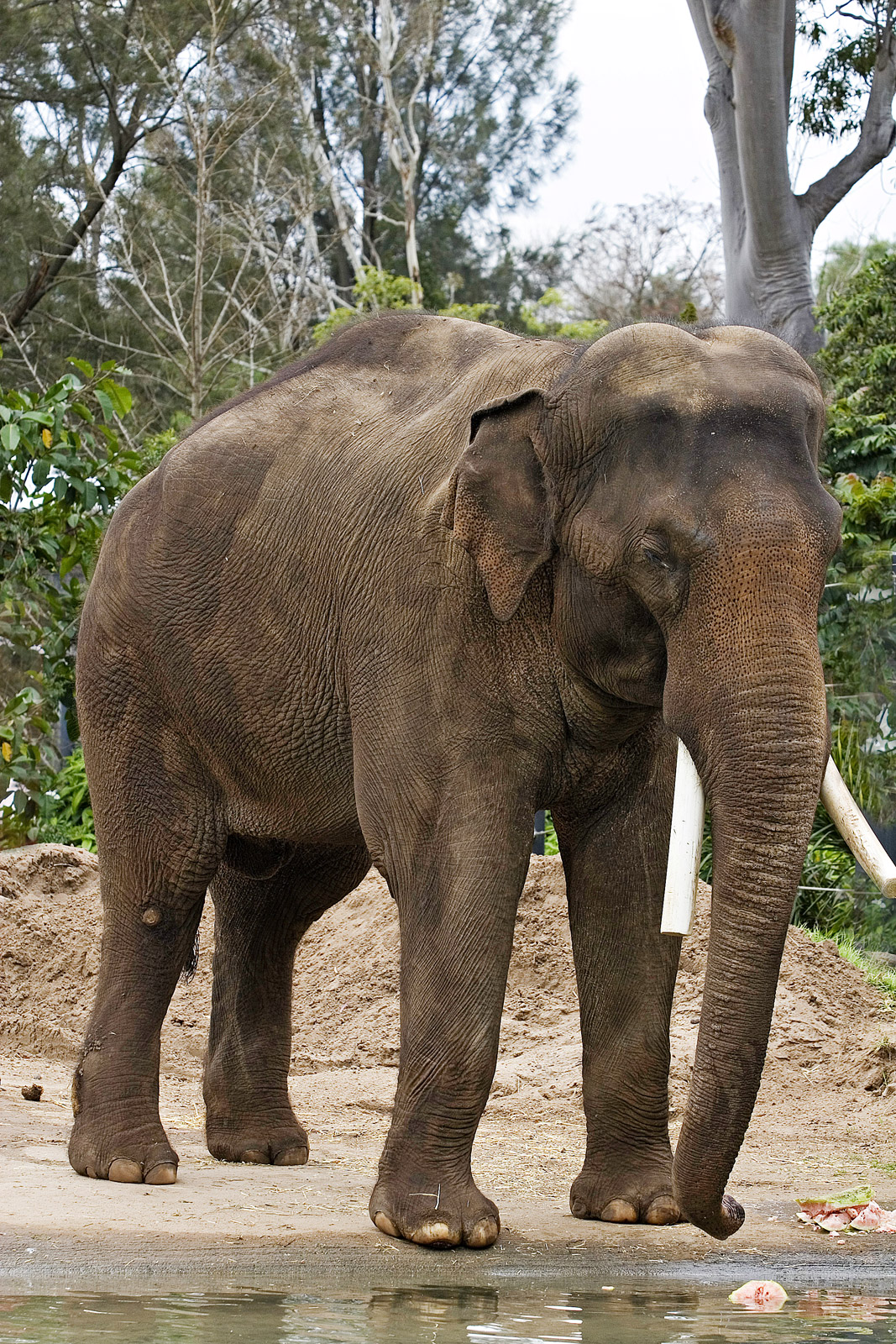|
Hainan Giant Flying Squirrel
The Indian giant flying squirrel (''Petaurista philippensis''), also called the large brown flying squirrel or the common giant flying squirrel, is a species of rodent in the family Sciuridae. It is capable of gliding flight using a skin membrane stretched between front and hind legs. It is found in mainland Southeast and South Asia, and southern and central China. Description This is a large species, with a head and body length of about 43 cm and a tail of 50–52 cm. It has black to gray-brown fur, long and soft on the upper parts and somewhat shorter underneath the body, with a grizzled appearance. A wing membrane between the forelimb and hindlimb, paler coloured underneath, allows gliding between trees. The tail is hairy and blackish to gray-brown, the feet are black, and the nose is pale pink with black vibrissae. Taxonomy Its taxonomy is very complex and not fully resolved. Up until the 1980s, some authorities even listed the Indian giant flying squirrel itself ... [...More Info...] [...Related Items...] OR: [Wikipedia] [Google] [Baidu] |
Walter Elliot (naturalist)
Sir Walter Elliot, KCSI (16 January 1803 – 1 March 1887) was a British civil servant in colonial India. He was also an eminent orientalist, linguist, archaeologist, naturalist and ethnologist who worked mainly in the Presidency of Madras. Born in Edinburgh, he studied at the East India Company College at Haileybury and joined the East India Company's civil service at Madras in 1820 and worked on until 1860. He was invested Knight Commander of the Order of the Star of India (KCSI) in 1866. Early life Elliot was born in 1803 at Edinburgh, son of James Elliot of Wolfelee and Caroline (''née'' Hunter). His early education was under a private tutor and he later was at school near Doncaster. He then went to Haileybury College, with a recommendation from his aunt, the widow of the twelfth Lord Elphinstone, graduated with "high distinction", and in January 1819 took up an appointment in the East India Company's Civil Service as a "writer". The post was secured through the influence ... [...More Info...] [...Related Items...] OR: [Wikipedia] [Google] [Baidu] |
Formosan Giant Flying Squirrel
The red giant flying squirrel or common giant flying squirrel (''Petaurista petaurista'') is a species of rodent in the family Sciuridae (squirrels). It is found in a wide variety of forest–types, plantations and more open habitats with scattered trees in Southeast Asia, ranging north to the Himalayas and southern and central China. One of the largest arboreal squirrels, all populations have at least some reddish-brown above and pale underparts, but otherwise there are significant geographic variations in the colours. The taxonomic position of those in the Sundaic region is generally agreed upon, but there is considerable uncertainty about the others, which variously have been included in this or other species, or recognized as their own species. Like other flying squirrels, the red giant flying squirrel is mostly nocturnal and able to glide (not actually fly like a bat) long distances between trees by spreading out its patagium, skin between its limbs. It is a herbivore a ... [...More Info...] [...Related Items...] OR: [Wikipedia] [Google] [Baidu] |
Rodents Of India
Rodents (from Latin , 'to gnaw') are mammals of the Order (biology), order Rodentia (), which are characterized by a single pair of continuously growing incisors in each of the upper and lower jaws. About 40% of all mammal species are rodents. They are native to all major land masses except for New Zealand, Antarctica, and several oceanic islands, though they have subsequently been introduced to most of these land masses by human activity. Rodents are extremely diverse in their ecology and lifestyles and can be found in almost every terrestrial habitat, including human-made environments. Species can be arboreal, fossorial (burrowing), saltatorial/richochetal (leaping on their hind legs), or semiaquatic. However, all rodents share several morphological features, including having only a single upper and lower pair of ever-growing incisors. Well-known rodents include Mouse, mice, rats, squirrels, prairie dogs, porcupines, beavers, guinea pigs, and hamsters. Rabbits, hares, and ... [...More Info...] [...Related Items...] OR: [Wikipedia] [Google] [Baidu] |
Rodents Of China
Rodents (from Latin , 'to gnaw') are mammals of the order Rodentia (), which are characterized by a single pair of continuously growing incisors in each of the upper and lower jaws. About 40% of all mammal species are rodents. They are native to all major land masses except for New Zealand, Antarctica, and several oceanic islands, though they have subsequently been introduced to most of these land masses by human activity. Rodents are extremely diverse in their ecology and lifestyles and can be found in almost every terrestrial habitat, including human-made environments. Species can be arboreal, fossorial (burrowing), saltatorial/richochetal (leaping on their hind legs), or semiaquatic. However, all rodents share several morphological features, including having only a single upper and lower pair of ever-growing incisors. Well-known rodents include mice, rats, squirrels, prairie dogs, porcupines, beavers, guinea pigs, and hamsters. Rabbits, hares, and pikas, whose incisors ... [...More Info...] [...Related Items...] OR: [Wikipedia] [Google] [Baidu] |
Mammals Of Sri Lanka
This is a list of the mammal species recorded in Sri Lanka, with their respective names in Sinhala also listed. There are 125 mammal species in Sri Lanka, of which one is critically endangered, ten are endangered, ten are vulnerable, and three are near threatened. The following tags are used to highlight each species' conservation status as assessed by the International Union for Conservation of Nature: Some species were assessed using an earlier set of criteria. Species assessed using this system have the following instead of near threatened and least concern categories: Mammalian diversity Order: Proboscidea (elephants) Order: Sirenia (manatees and dugongs) Sirenia is an order of fully aquatic, herbivorous mammals that inhabit rivers, estuaries, coastal marine waters, swamps, and marine wetlands. All four species are endangered. *Genus: ''Dugong'' **Dugong, ''D. dugon'' මුහුදු ඌරා Order: Primates The order Primates contains humans and their ... [...More Info...] [...Related Items...] OR: [Wikipedia] [Google] [Baidu] |
Petaurista
''Petaurista'' is a genus of rodent in the family Sciuridae. They are large to very large flying squirrels found in forests and other wooded habitats in southern and eastern Asia. Like other flying squirrels, they are mostly nocturnal and able to glide (not actually fly like a bat) long distances between trees by spreading out their patagium, skin between their limbs. They feed primarily on plant material, but will also take small animals such as insects. Taxonomy The species level taxonomy is very complex and not fully resolved. In 2005, ''Mammal Species of the World'' recognised eight species, but later studies have found that some of these were highly polyphyletic, and recent authorities have often recognised some of the most divergent " subspecies" as valid species. Additionally, three new species were described from northeastern India in 2007–2013, although their validity needs to be confirmed. Living species Eight species were recognised in ''Mammal Species of th ... [...More Info...] [...Related Items...] OR: [Wikipedia] [Google] [Baidu] |
Indian Giant Squirrel
The Indian giant squirrel or Malabar giant squirrel (''Ratufa indica'') is a large multi-coloured tree squirrel species endemic to forests and woodlands in India. It is a diurnal, arboreal, and mainly herbivorous squirrel. Distribution and habitat This species is endemic to India, with main sections of its distribution in the Western Ghats, Eastern Ghats and Satpura Range as far north as Madhya Pradesh (approximately 22° N). It is found at altitudes of in tropical deciduous, semi-deciduous (where often utilizing denser riparian growth), and moist evergreen forests and woodlands. In general, its distribution is fragmented because it is intolerant of habitat degradation. The Indian giant squirrel generally nests in taller trees with a mean height of (± SD) in order to avoid predators. Description The Indian giant squirrel is one of the largest squirrels, with a head–and–body length of , a tail that is about the same or somewhat longer, and a weight of , alt ... [...More Info...] [...Related Items...] OR: [Wikipedia] [Google] [Baidu] |
Artocarpus Heterophyllus
The jackfruit (''Artocarpus heterophyllus''), also known as jack tree, is a species of tree in the fig, mulberry, and breadfruit family (Moraceae). Its origin is in the region between the Western Ghats of southern India, all of Bangladesh, Sri Lanka, and the rainforests of the Philippines, Indonesia, and Malaysia. The jack tree is well-suited to tropical lowlands, and is widely cultivated throughout tropical regions of the world. It bears the largest fruit of all trees, reaching as much as in weight, in length, and in diameter. A mature jack tree produces some 200 fruits per year, with older trees bearing up to 500 fruits in a year. The jackfruit is a multiple fruit composed of hundreds to thousands of individual flowers, and the fleshy petals of the unripe fruit are eaten. The ripe fruit is sweet (depending on variety) and is more often used for desserts. Canned green jackfruit has a mild taste and meat-like texture that lends itself to being called a "vegetable meat". J ... [...More Info...] [...Related Items...] OR: [Wikipedia] [Google] [Baidu] |
Cullenia
''Cullenia'' is a genus of flowering plants native to India and Sri Lanka. Earlier classification schemes place the genus in the kapok-tree family (Bombacaceae), but the Angiosperm Phylogeny Group places it in the mallow family (Malvaceae). The name is after General William Cullen William Cullen FRS FRSE FRCPE FPSG (; 15 April 17105 February 1790) was a Scottish physician, chemist and agriculturalist, and professor at the Edinburgh Medical School. Cullen was a central figure in the Scottish Enlightenment: He was ... (1785–1862), a Resident in the court of the Maharaja of Travancore who also took an interest in botany. References Malvaceae genera Helicteroideae {{Malvaceae-stub ... [...More Info...] [...Related Items...] OR: [Wikipedia] [Google] [Baidu] |
Ficus Racemosa
''Ficus racemosa'', the cluster fig, red river fig or gular, is a species of plant in the family Moraceae. It is native to Australia and tropical Asia. It is a fast-growing plant with large, very rough leaves, usually attaining the size of a large shrub, although older specimens can grow quite large and gnarled. It is unusual in that its figs grow on or close to the tree trunk, termed cauliflory. The fruits are commonly eaten as a vegetable after the seeds have been discarded, and made into stir-fries and curries. The fruits are a favourite staple of the common Indian macaque. It serves as a food plant for the caterpillars of the two-brand crow butterfly (''Euploea sylvester'') of northern Australia. In Hinduism According to the Shatapatha Brahmana, the Audumbara tree was created from the force of Indra, the leader of the gods that came out of his flesh when he overindulged in soma: ''From his hair his thought flowed, and became millet; from his skin his honour flowed, and b ... [...More Info...] [...Related Items...] OR: [Wikipedia] [Google] [Baidu] |
Spot-bellied Eagle-owl
The spot-bellied eagle-owl (''Bubo nipalensis''), also known as the forest eagle-owl is a large bird of prey with a formidable appearance. It is a forest-inhabiting species found in the Indian Subcontinent and Southeast Asia. This species is considered part of a superspecies with the barred eagle-owl (''Bubo sumatranus''), which looks quite similar but is allopatric in distribution. Taxonomy The spot-bellied eagle-owl, like its close relative, the barred eagle-owl, is one of the species that would have to be moved into '' Ketupa'' if that genus is to be retained, according to mtDNA cytochrome ''b'' sequence data (Olsen ''et al.'' 2002). Unlike the " fish owls" that were also considered to be included in '' Ketupa'', the barred and the spot-bellied species are not closely tied to riparian habitats and piscivorous eating habits. However, all eagle-owls and fish owls (as well as the snowy owl (''Bubo scandianus'')) have been deemed insufficiently distinct to warrant separate ge ... [...More Info...] [...Related Items...] OR: [Wikipedia] [Google] [Baidu] |







